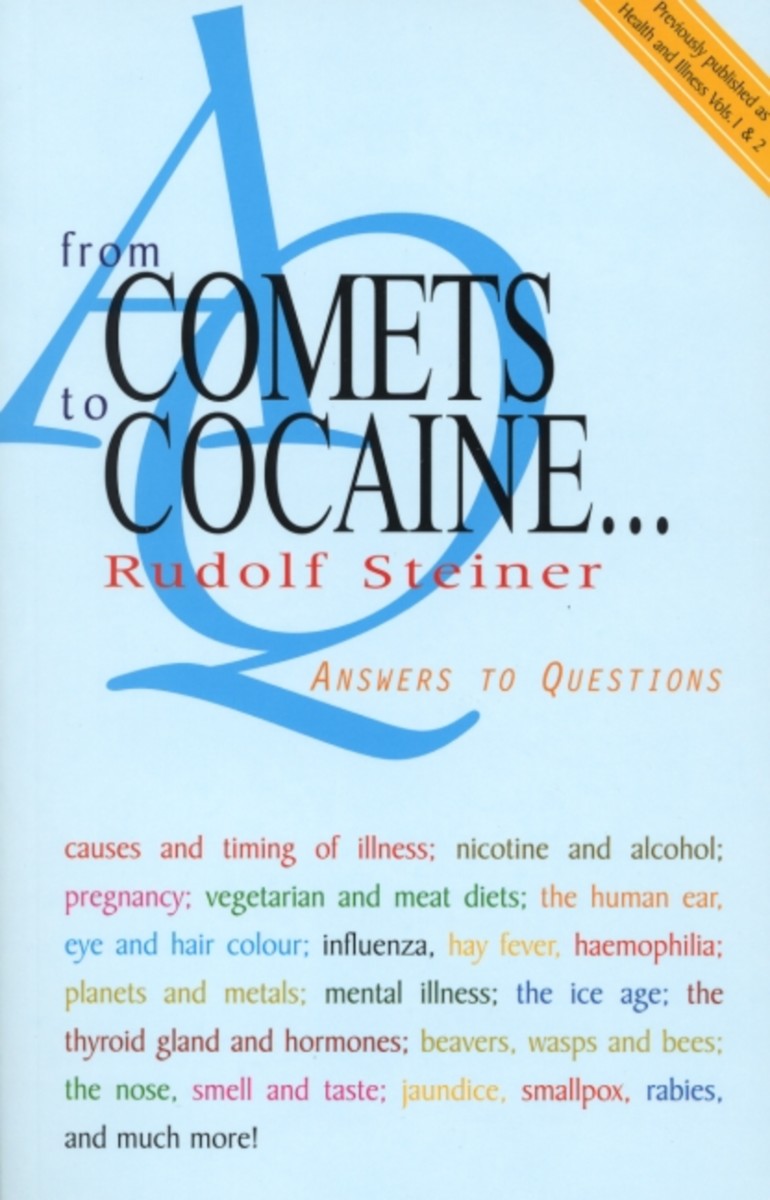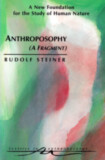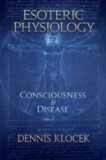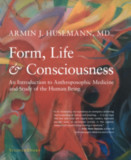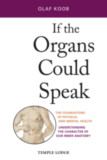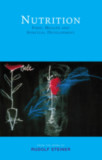- Publisher
Rudolf Steiner Press - Published
1st January 2002 - ISBN 9781855840881
- Language English
- Pages 320 pp.
18 discussions, Dornach, October 19, 1922 – February 10, 1923 (CW 348)
The remarkable discussions in these two volumes took place between Rudolf Steiner and workers at the Goetheanum, Switzerland, who chose the varied subject matter. Steiner took questions and usually gave immediate answers. The astonishing nature of his responses, their insight, knowledge and spiritual depth, is testimony to his outstanding ability as a spiritual initiate and teacher.
Accessible and stimulating, the records of these sessions are both entertaining and profound. In From Comets to Cocaine, Steiner discusses, among other things, nicotine and alcohol; the causes and timing of illness; pregnancy; vegetarian and meat diets; the human ear, eye and hair color; influenza, hay fever, hemophilia; planets and metals; mental illness; the ice age; the thyroid gland and hormones; beavers, wasps and bees; the nose, smell and taste; and jaundice, smallpox and rabies.
This volume is a translation from German of Über Gesundheit und Krankheit. Grundlagen einer geisteswissenschaftlichen Sinneslehre (GA 348). Previous translation published in two volumes as Health and Illness. Previously published in two volumes as Health and Illness.
C O N T E N T S:
Publisher’s Foreword by Sevak Gulbekian
1. Oct. 19, 1922: The world situation. Causes of illness.2. Oct. 24, 1922: Illnesses at different period of life.
3. Nov. 29, 1922: The formation of the human ear. Eagle, lion, bull, human.
4. Dec. 2, 1922: Thyroid gland and hormones. Mental and physical rejuvenation treatments.
5. Dec. 13, 1922: The eye. Hair color.
6. Dec. 16, 1922: The nose, smell and taste.
7. Dec. 20, 1922: Spiritual-scientific foundations for a try physiology.
8. Dec. 23, 1922: How the soul lives in the breathing process.
9. Dec. 27, 1922: Why we become sick. Influenza, hay fever, mental illness.
10. Dec. 30, 1922: Fever versus shock. Pregnancy.
11. Jan. 5, 1923: The brain and thinking.
12. Jan. 8, 1923: Effects of alcohol.
13. Jan. 10, 1923: The power of intelligences as the sun’s effect.
14. Jan. 13, 1923: Effects of Nicotine. Vegetarian and meat diets. Absinthe. Twin births.
15. Jan. 20, 1923: Diphtheria and influenza. Crossed eyes.
16. Jan. 27, 1923: Relationship of breathing and blood circulation. Jaundice, smallpox, rabies.
17. Feb. 3, 1923: Effect of absinthe. Hemophilia. The ice age. Bees
18. Feb. 10, 1923: Relationship of planets and metals and their healing effects.
Rudolf Steiner
Rudolf Steiner (b. Rudolf Joseph Lorenz Steiner, 1861–1925) was born in the small village of Kraljevec, Austro-Hungarian Empire (now in Croatia), where he grew up. As a young man, he lived in Weimar and Berlin, where he became a well-published scientific, literary, and philosophical scholar, known especially for his work with Goethe’s scientific writings. Steiner termed his spiritual philosophy anthroposophy, meaning “wisdom of the human being.” As an exceptionally developed seer, he based his work on direct knowledge and perception of spiritual dimensions. He initiated a modern, universal “spiritual science” that is accessible to anyone willing to exercise clear and unbiased thinking. From his spiritual investigations, Steiner provided suggestions for the renewal of numerous activities, including education (general and for special needs), agriculture, medicine, economics, architecture, science, philosophy, Christianity, and the arts. There are currently thousands of schools, clinics, farms, and initiatives in other fields that involve practical work based on the principles Steiner developed. His many published works feature his research into the spiritual nature of human beings, the evolution of the world and humanity, and methods for personal development. He wrote some thirty books and delivered more than six thousand lectures throughout much of Europe. In 1924, Steiner founded the General Anthroposophical Society, which today has branches around the world.


